The War in Ukraine Was Supposed to End 5 Years Ago. But It Didn’t.
Nolan Peterson /
KYIV, Ukraine—Saturday marked the fifth anniversary of the day the war in Ukraine was supposed to end. But it never did.
On early Tuesday fighting flared in Ukraine’s eastern Donbas region when Russian-backed forces assaulted Ukrainian troops as they occupied an observation post near the front-line town of Zolote.
Under intense shelling, Ukrainian forces were dislodged from their positions, the Ukrainian military reported. Ukrainians held their ground when a separate combined Russian-separatist attack hit their forces near the town of Orikhove that same day.
One Ukrainian soldier died in Tuesday’s attacks and six more were wounded, Ukrainian military officials said. Four combined Russian-separatist militants reportedly died as well.
Tuesday’s attacks came on the five-year anniversary of the Ukrainians’ defeat to Russian forces at the battle for Debaltseve, and just three days after the five-year anniversary of the day the so-called Minsk II agreement was supposed to have curtailed combat in eastern Ukraine.
The fighting also threatens to derail an ambitious, ongoing gambit for peace with Russia by Ukrainian President Volodymyr Zelenskyy—an effort that has recently shown promising signs of progress.
“This is not just a cynical provocation, the purpose of which is to press on the Debaltseve wound that will never heal completely. This is an attempt to disrupt the peace process in Donbas, which has begun to move forward, albeit in small, but relentless steps,” Zelenskyy said on Tuesday.
“Our course towards ending the war and adherence to international agreements remains unchanged—as does our determination to repulse any manifestations of armed aggression against Ukraine,” Zelenskyy added.
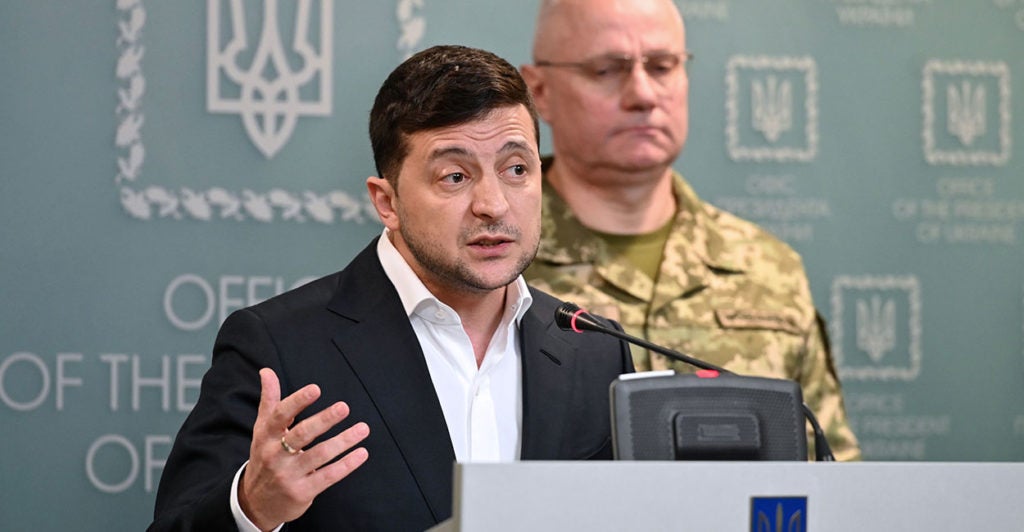
According to Kyiv, the Russian-backed forces behind Tuesday’s attacks used heavy weapons banned by the operative Minsk II cease-fire, including mortars and artillery. The Organization for Security and Cooperation in Europe, or OSCE, reported 2,300 explosions on the front lines in eastern Ukraine before noon on Tuesday.
The flare-up was unusually intense for the war in its current, stalemated condition. Some see the surge in violence as a reminder of how precarious the status quo, frozen war in the Donbas remains.
It is a conflict in which Europe’s two largest standing land armies in terms of manpower—those of Russia and Ukraine—continue to take pot shots at each other. And, as Tuesday’s violence clearly shows, the conflict could quickly and unpredictably spiral into something much worse.
“There is an ongoing war in our country, it hasn’t ceased. The fact that this attack was on the fifth anniversary of the Debaltseve battle was extremely cynical,” Zelenskyy’s chief of staff, Andriy Yermak, said Tuesday in a social media post.
‘Strategy of Escalation’
Today, the conflict in Ukraine’s eastern Donbas region remains a limited, conventional war, mostly fought from trenches. It’s like World War I trench warfare on a smaller scale—and with a high-tech edge.
And the war is still lethal.
More than half of the war’s nearly 14,000 combat-related deaths have occurred since the failed February 2015 cease-fire, known as Minsk II, went into effect. The war has also wounded more than 30,000 people and displaced about 1.5 million more from their homes.
In the Donbas warzone, one Ukrainian soldier still dies in combat every three days, on average. And civilians are often caught in the crossfire, too—most often these days due to land mines.
“The Kremlin continues to pursue a strategy of escalation in Donbas in flagrant violation of Russia’s obligations, which they have undertaken as a party to the Minsk agreements,” Serhiy Kyslytsya, Ukraine’s United Nations ambassador, said at a U.N. Security Council meeting in New York City on Tuesday.
“The seized areas turned into a land of fear and terror,” Kyslytsya said.
The Kremlin distanced itself from Tuesday’s fighting, reiterating a long-held line that its forces are not involved at all in the 6-year-old war.
“We don’t have the details of the clash, we don’t know what triggered the clash. We read there are casualties on both sides, which we find unfortunate and express our hope that soon we will be able to clarify the details of what happened before going for any conclusions,” Kremlin spokesman Dmitry Peskov told reporters on Tuesday.
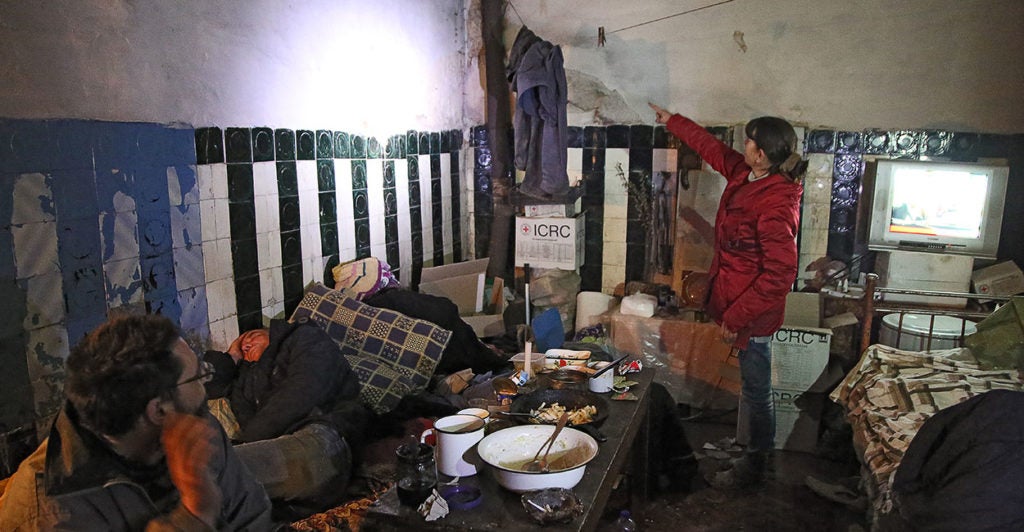
Tuesday’s attacks also coincided with a shake-up in Russian President Vladimir Putin’s choice as point man on Ukrainian policy.
Hours after the assault in eastern Ukraine Tuesday morning, Putin fired Vladislav Surkov, his point man on Ukraine policy since 2013. Some Ukrainians see the parallel timing as evidence that Tuesday’s assault may not have been wholeheartedly sanctioned by Moscow.
Surkov was widely regarded as a hardliner and the architect of Russia’s war on Ukraine. Dmitry Kozak, Surkov’s replacement, is widely seen as a more moderate voice.
Kozak worked with Yermak, whom Zelenskyy named as his new chief of staff just last week, to organize two landmark prisoner exchanges between Ukraine and Russia last year.
The staff shake-ups in both Moscow and Kyiv could signal a commitment to peace negotiations, some experts say. Even after Tuesday’s flare-up in fighting, Zelenskyy’s administration made clear that it was not abandoning peace talks with Moscow.
“That is why we are doing everything possible to make this war end. Not to have such news in the morning, to let our soldiers return to their families alive,” Yermak said.
False Start
On Feb. 12, 2015, the leaders of France, Germany, Russia, and Ukraine met in the Belarusian capital of Minsk and agreed to a peace deal known as Minsk II. According to the agreement’s terms, an unconditional cease-fire was supposed to go into effect in Ukraine’s eastern Donbas war zone on Feb. 15, 2015.
Fighting never ended. However, Minsk II did freeze the conflict more or less along its current boundaries and banned the positioning of heavy weapons within a buffer zone on either side of the roughly 250-mile-long contact line between Ukrainian and combined Russian-separatist forces.
Additionally, the Minsk II deal required Ukraine to amend its constitution to federalize the country, devolving central authority away from Kyiv in favor of greater autonomy for regional governments. Minsk II also called for elections to be held in the two breakaway territories in the Donbas—territories over which Moscow still enjoys military and political control.
The terms of the Minsk II deal were decidedly unfavorable to Ukraine. Today, many Ukrainians see the constitutional amendment requirements to be a Russian Trojan horse aimed at undermining Ukraine’s pro-Western pivot.
However, with one of the fiercest battles of the war raging in the Ukrainian town of Debaltseve at the time, February of 2015 was a do-or-die moment for Kyiv.
In Debaltseve, Ukrainian forces—a mix of regular army troops and civilian paramilitary units—had at that time been weathering weeks of heavy shelling at the hands of a combined force of Russian regulars and Moscow-backed separatists. It was a classic example of Soviet “area warfare,” in which an enemy is targeted with overwhelming, indiscriminate firepower.
From Kyiv’s perspective, the Debaltseve battle sent a clear message: Either comply with Russian demands at the Minsk cease-fire negotiations or risk a full-scale invasion.
Thus, Petro Poroshenko, Ukraine’s then-president, agreed to Russia’s terms to simply stop the fighting. Yet, the unconditional cease-fire that was supposed to go into effect on Feb. 15, 2015, never materialized.
Under pressure from unabated Russian shelling, Ukrainian forces ultimately abandoned Debaltseve on Feb. 18, 2015. After the Russians took the embattled town and halted their advance, the war then froze along its front lines with only minor territorial changes occuring over the past five years.
Today, neither side is fighting to affect a breakthrough or take significant new ground. Rather, both sides simply go on fighting—weathering daily shelling and sniper fire—to not be the side that backs down first.
“Today’s attack by Russian-led forces near Zolote—which resulted in Ukrainian casualties—comes on the five-year anniversary of Russian-led forces taking the key rail hub of Debaltseve in direct contravention of the terms of the Minsk agreements reached just a week earlier,” Cherith Norman Chalet, acting deputy representative of the U.S. to the United Nations, said Tuesday.
“Then, as now, Russian-led forces continue to contravene commitments made by President Putin and Russian officials, and to kill Ukrainians on Ukrainian territory,” Norman Chalet said.
Quarantine
Up and down the front lines in the Donbas there are still daily exchanges of artillery and small arms gunfire. For those living within the Donbas war zone, war has become a way of life. Children still go to school, even in front-line towns amid the shelling and sniper fire. Families still gather for dinner at night in blacked-out apartments. Outdoor markets still run during the weekends. Life goes on.
“5 years after the establishment of a ‘Package of Measures’ for the Minsk agreements implementation, Ukrainians continue to die as a result of Russian aggression. Russia must cease its aggression and fully meet its Minsk commitments,” the U.S. Embassy in Ukraine wrote Feb. 12 on Twitter.
For years, cease-fire monitors from the Organization for Security and Cooperation in Europe have not monitored the front lines at night due to safety concerns. As a result, the war has adopted a nocturnal routine in which the use of heavy weapons ramps up after the sun goes down and the OSCE cease-fire observers have retired to safe shelters.
It’s not uncommon to see the night sky light up with tracer fire, or the distant flash of exploding shells. That’s not to say, however, that sporadic fighting doesn’t go on during the daytime. Because it often does.
For Ukraine’s soldiers, their country’s ongoing war effort is meant to keep the Russian threat quarantined to the Donbas war zone. Many Ukrainian troops say that if they simply packed up and went home, then Moscow would continue its invasion behind them all the way to Kyiv.
For Moscow, the war in eastern Ukraine is a long-term gambit to slow Ukraine’s pro-Western pivot. By dialing up or down the level of violence in the Donbas, Moscow attempts to extract diplomatic concessions from Kyiv and delegitimize Ukraine’s pro-democratic ambitions.
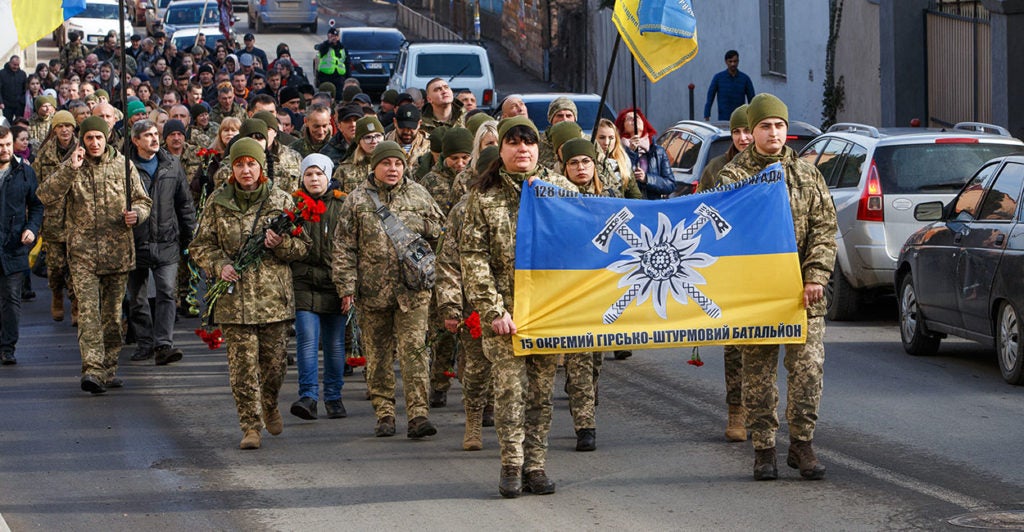
Apart from the humanitarian crisis and the ongoing tragedy of soldiers continuously killed in combat, the war has certainly been a drain on Ukraine’s economy and a detractor from much-needed foreign investment. The war is also a continued roadblock in the way of Ukraine’s ambitions to join both the European Union and NATO one day.
Yet, if Moscow had hoped to use the war as a way to coerce Kyiv back into Russia’s so-called sphere of influence, then the Kremlin’s plan has been a resounding failure.
Ukraine’s democracy is flourishing like never before due to the tireless efforts of grassroots, pro-democracy, civil-society groups. Many Ukrainians say their country is now firmly set on an irreversible, pro-Western trajectory. Moreover, the country has also undertaken a top-to-bottom cultural, economic, and political divorce from its former Soviet overlord.
Today, Ukraine is a democratic success story in the making, despite Russia’s best efforts to the contrary.
There’s a long way to go, for sure, when it comes to fighting corruption. But Ukraine has made more progress in the past five years, and while fighting a war, toward ditching its authoritarian, Soviet past and becoming a liberal Western democracy than it achieved in all the years since achieving independence from Soviet rule in 1991.
New Blood
Five years after Minsk II went into effect, there has been a fresh injection of energy into finding a peaceful solution to the war in the Donbas.
In December, Zelenskyy and Putin met in Paris for peace talks. It was the first meeting in three years for the so-called Normandy Format—a negotiating framework that dates back to 2014 to end the war in eastern Ukraine.
The Paris peace talks were a significant step toward a negotiated peace, signaling that both sides were willing to consider a diplomatic solution to the war rather than victory through decisive military action.
At a minimum, the talks reopened channels of communication between Kyiv and Moscow through which trust can be slowly rebuilt, allowing incremental steps forward in hashing out compromises on controversial sticking points, such as holding elections in the Donbas.
On Friday, Zelenskyy’s administration announced that the Ukrainian president had called Putin to discuss the possibility of another meeting of the Normandy Format leaders.
Tuesday’s spike in combat, however, underscores how easily reversible that progress toward peace may be.
“This latest incident is not isolated,” Edi Rama, OSCE chairman, said in a statement on Tuesday about the spike in combat in the Donbas. “Every day the ceasefire is violated, despite the undertakings set out in the Minsk agreements, and the explicit commitment to ‘a full and comprehensive implementation of the ceasefire’ agreed in Paris two months ago.”
After six years of war, and five years of the failed Minsk II cease-fire, many Ukrainians remain skeptical about the prospects for peace anytime soon.

Spearheaded by war veterans opposed to Zelenskyy’s peace overtures to Moscow, a nationwide “anti-capitulation” movement has sprouted across Ukraine. Zelenskyy’s popularity has suffered in the process. A nationwide poll in January put Zelenskyy’s approval rating among Ukrainians at 49%—down from 73% in September.
Opponents of a negotiated peace with Russia are entrenched in their opposition to holding any elections in the Donbas until Ukrainian forces have regained full control of the embattled territory, and all Russian troops and its agents have departed.
Otherwise, according to Zelenskyy’s critics, elections in the Donbas will simply by a means by which Moscow can insert its own mouthpieces into Ukraine’s national parliament.
It is now clear, however, that the lopsided hard-power advantage that Moscow once enjoyed over Kyiv has diminished since February of 2015. Ukraine now has more bargaining power against Moscow than it ever has. And that’s one key reason why many Ukrainian veterans are so staunchly opposed to making any concessions to Moscow for the sake of peace.
Battle-Hardened
Since the war began in 2014, Ukraine has rebuilt its once infirm military—which had been dilapidated by widespread corruption in the post-Soviet years—into a much more modern, professional, and battle-hardened force.
“Yes, we want peace, but at the same time we are increasing funding for the army and are actively working to strengthen its defense capabilities,” Yermak said.
Since 2014, Russia has used Ukraine as a testing ground for both its modern conventional and hybrid warfare doctrines. Ukrainian troops, therefore, have more combat experience against the modern Russian military than any other country.
Ukraine’s military is currently in the midst of a crash-course modernization effort. Part of that transformation includes the adoption of NATO operating standards across the board—all in hopes of joining the Western alliance one day.
To that end, Ukraine’s armed forces have ditched the strict, top-down hierarchy of the Soviet chain of command, which often left front-line troops hamstrung in the chaos of combat by requiring them to obey the orders of commanders ensconced at command posts safely distant from the front lines.
In place of the Soviet chain of command, Ukraine’s armed forces have adopted a command hierarchy modeled on the U.S. military in which junior officers and non-commissioned officers are more empowered to make decisions on their own, in the heat of combat, based on battlefield realities.
That shift in Ukraine’s military chain of command philosophy makes the country’s armed forces much more adaptable to the fluid realities of combat. It also allows them to be more effective against Russia’s hybrid warfare tactics.
‘Little Green Men’
An evolving threat that spans every combat domain, “hybrid” or “gray zone” warfare combines conventional military force with other so-called gray zone activities, such as cyberattacks and propaganda, both on the battlefield and deep behind the front lines.
These tactics create battlefield confusion, primarily in the command and control process, clouding the situational awareness of both front-line troops and their commanders. Famously, when patchless Russian soldiers—the “little green men,” as they came to be known—showed up in Crimea in February of 2014, Ukrainian forces gave up without a fight.
In Crimea, Russia’s so-called little green men faced a shell-shocked Ukrainian military that was unwilling to fight back. However, Russia’s hybrid warfare operation in the Donbas didn’t go nearly as smoothly.
In its early months, Russia’s hybrid offensive was on the march, leapfrogging across the Donbas, taking town after town. Caught off guard at the outset, Ukrainians soon rallied to their country’s defense by launching a grassroots war effort. By that July, a ragtag coalition of Ukrainian government troops and civilian militias had gained the upper hand against combined Russian-separatist forces.
By July of 2014, just three months into the conflict, Ukrainian forces had retaken 23 out of the 36 districts previously under combined Russian-separatist control.
Then in August 2014, with its hybrid operation in shambles, Russia outright invaded eastern Ukraine with thousands of its own regular troops, subsequently routing the Ukrainians at the disastrous battle for Ilovaisk.
By the end of August 2014, Russian forces were marching on the key port city of Mariupol. This correspondent was in Mariupol at that time, and the mood was apocalyptic.
Mariupol’s residents were, at the time, readying for street-to-street fighting. Names like “Grozny” and “Stalingrad” were frequently invoked to describe what the looming battle for the city would likely resemble.
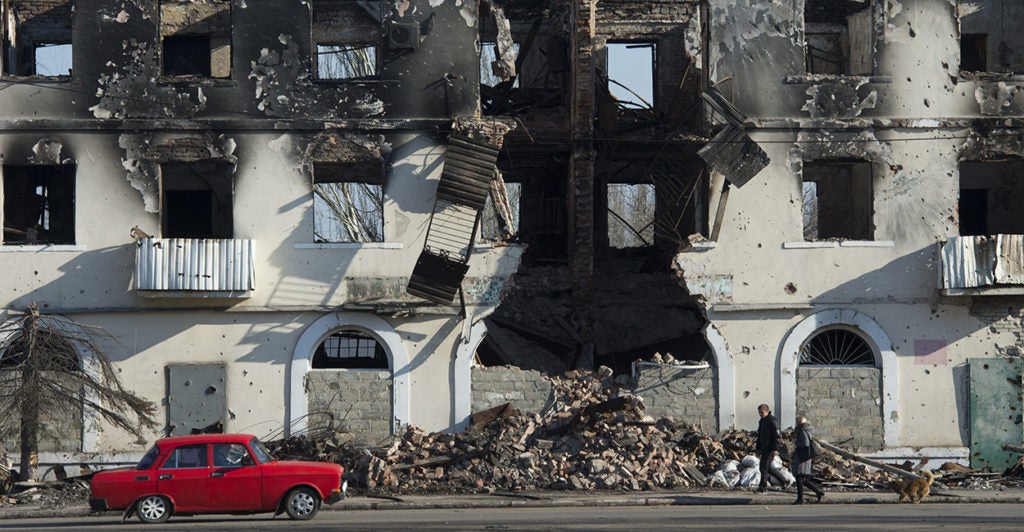
Local militia leaders trained civilian boys and old men in guerrilla warfare basics. They practiced shooting small arms and bazookas, planting explosives, and building tank traps.
Soldiers and civilians joined together to build tank barriers, trenches, barbed-wire barriers, and machine gun nests on the city’s perimeter. The sandy beaches on the Sea of Azov coastline looked like those of Normandy in June 1944.
During the first days of September 2015, you could easily hear the sounds of tank battles from downtown Mariupol. It seemed as if the end had come at last.
But the battle for Mariupol never happened.
Poroshenko and Putin met in Minsk in September 2014 to sign the war’s first cease-fire. That deal stalled the war and the Russian advance, thereby saving Mariupol, a city of 500,000 people, from disaster.
The first Minsk cease-fire quickly collapsed. And subsequent fighting at the Donetsk airport became particularly brutal during the winter of 2014 to 2015.
Close quarters fighting sometimes saw opposing troops holed up on different floors of the same building. There was hand-to-hand fighting at times, according to Ukrainian soldiers who fought at the Donetsk airport.
Yet, from an operational perspective, Russia’s original hybrid warfare plan in the Donbas was an abject failure, requiring the use of conventional military force to save face. Today, with its rapidly strengthening conventional military, Ukraine is now positioned to become a regional counterbalance against Russian military power in Eastern Europe.
Moreover, Ukraine’s grassroots war effort in 2014 sends a deterrent message to Moscow, underscoring that a full-scale invasion of Ukraine would be met with a protracted, guerrilla resistance.
The ‘Dreadful Lessons of History’
The fifth anniversary of the Minsk II case-fire should serve as a sobering reminder for Western democracies that Europe’s two largest militaries in terms of manpower are still shooting at each every day in the Donbas.
The longer that precarious status quo continues, the greater the chance that an unforeseen accident might ignite a much bigger war that spreads well beyond the limits of the Donbas battlefields.
So long as the Minsk II cease-fire allows Russia to carry on prosecuting its frozen war in eastern Ukraine, Europe will remain just one “Franz Ferdinand” scenario away from another major land war. The unthinkable could happen again. After all, wars often begin which no one wants.
Just two living generations ago, Ukraine was the deadliest battlefield of the deadliest war in human history. Some of the soldiers who fought in that war, and the civilians who survived it, are still alive today. Thus, no one should think that another war like that is impossible, or that the events of our time are somehow immune to history’s perennial cycles of war and peace.
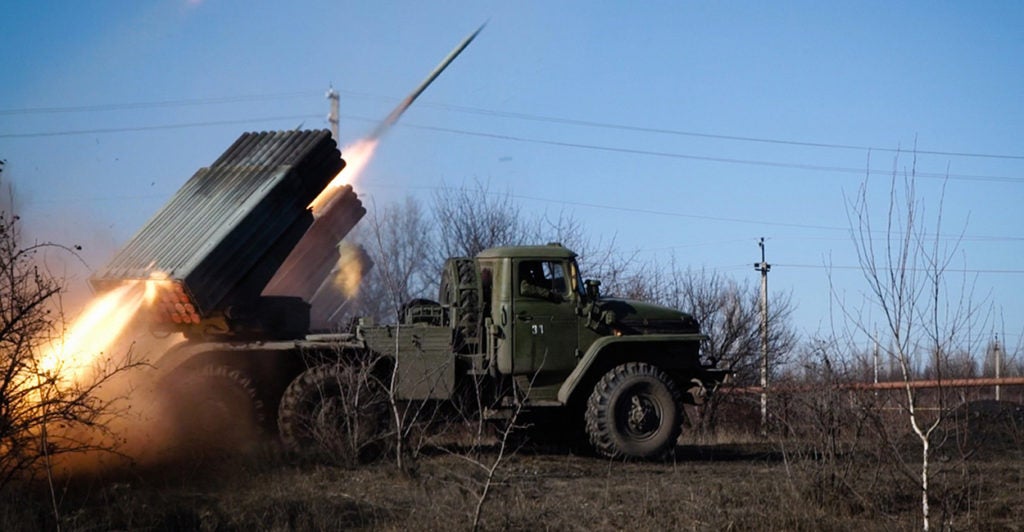
With history as a guide, one thing is clear: If the war in Ukraine accidentally escalates into a bigger conflict, Russians and Ukrainians won’t be the only ones fighting in it.
Five years after the failed Minsk II cease-fire was supposed to go into effect and unconditionally curb combat in eastern Ukraine, a key question remains unanswered:
When, and where, will this war end?
At a speech at the Munich Security Conference on Feb. 15, U.S. Secretary of State Mike Pompeo recalled visiting a wounded Ukrainian veteran at a military hospital in Kyiv, just two weeks earlier.
“And as we were getting ready to leave, he got up. He grabbed his crutches. He moved across the room and he went to his wall locker, grabbed his uniform, pulled off his patch, and he handed me his unit logo. He told me to keep it; he wanted me to have it,” Pompeo said, adding: “That moment hit home for me. It reminded me that sovereignty is worth fighting for and that it’s real, that we’re all in this fight together.”
